|
REGATTA |
|
|
|
25th Rijeka's
regatta will be held in Port of Rijeka at Karolina Riječka pier.
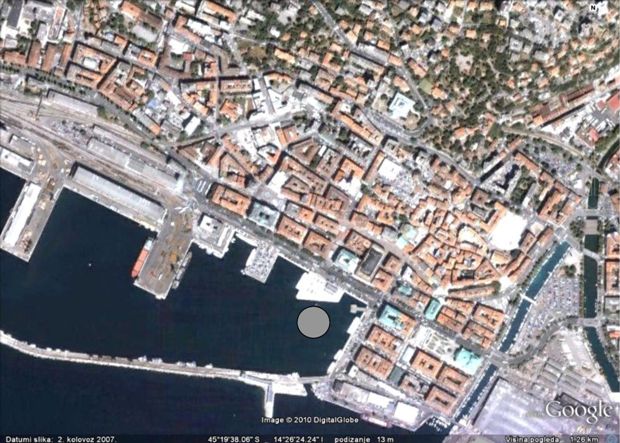
|
| |
|
|
|
WHERE TO STAY? |
|
|
|
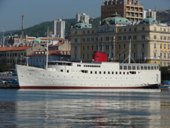
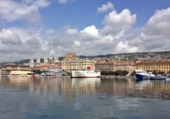 |
The best option is Botel Marina in Port of Rijeka
right on the racing area. Marina - first Croatian “botel” begins her
work in October 2013, in the heart of Rijeka, on Adamic Pier, and on
her four decks, she is going to offer three commercial activities:
accommodation, bar and restaurant. The accommodation capacities on
Marina are located on the decks one and two, and they consist of 36
fashionably decorated accommodation units, common areas like the
living room and appropriate recreational and multimedia units
(fitness room, internet point, lounge room).
The restaurant is located on the deck three; it has the capacity of
80 consumers’ places, and includes a representative space of the
boat’s bow, while the two bars on the deck four are located on 400
m2 of space, with three barrooms, and a possibility to use different
separated spaces. Marina has always been and will always be the
place were people meet, make friends, have fun and make memories. So
come and see for yourself Booking is available through
Marina's
website
|
|
Other possibilities of different hotels, hostels and private
accomodation are available
here. |
| |
|
|
|
|
| |
|
|
|
TOWN OF RIJEKA |
|
|
|
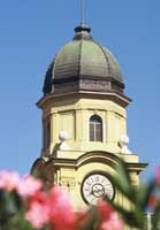 Rijeka
is a city with 130.000 inhabitants or 180.000
together with the surrounding area. Rijeka is the city with the most
baroque marble alters on the eastern coast of Adriatic. Rijeka
is a city with 130.000 inhabitants or 180.000
together with the surrounding area. Rijeka is the city with the most
baroque marble alters on the eastern coast of Adriatic.
In 1833 in
Rijeka started to work the first steam engine in the southeastern Europe. In Rijeka,
the first torpedo in the world was constructed and manufactured. In Rijeka,
the flight of the gunshot was photographed for the first time in the history. Rijeka's
Carnival is the biggest in Croatia and on of the biggest in this part of Europe.
Good connections with the hinterland, modern
port facilities and strong naval and commercial tradition helped Rijeka to develop into
Croatia's biggest port. It also represents an important European transit port.
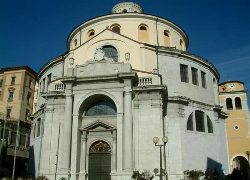 The town
saw a more intense development in the 18th century, increased by the construction of the
Louise Road (1810, to Karlovac), the port and, particularly, the railroads to Budapest and
Vienna. Between the two World Wars, as Rijeka was cut off from the immediate hinterland,
the port of Rijeka lost its original importance, but its eastern part, the port of Susak,
started to develop. After 1945 Rijeka restored its position as a large centre of commerce
and maritime affairs (seating several shipping companies), with developed industry
(shipyard, oil refinery, diesel engines, ship cranes, ship equipment, paper, etc.). The town
saw a more intense development in the 18th century, increased by the construction of the
Louise Road (1810, to Karlovac), the port and, particularly, the railroads to Budapest and
Vienna. Between the two World Wars, as Rijeka was cut off from the immediate hinterland,
the port of Rijeka lost its original importance, but its eastern part, the port of Susak,
started to develop. After 1945 Rijeka restored its position as a large centre of commerce
and maritime affairs (seating several shipping companies), with developed industry
(shipyard, oil refinery, diesel engines, ship cranes, ship equipment, paper, etc.).
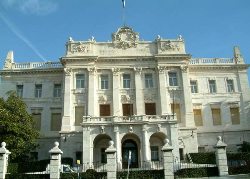 The geographical position of
Rijeka is crucial
for its tourist image. This is where a visitor in transit meets the sea for the first
time, regardless of whether coming by road or rail. The access to Rijeka is extremely
attractive - both from the west and from the east - and the access from the sea offers the
most charming view on Rijeka. The natural and cultural features of Rijeka, the
Mediterranean climate, and the closer and broader surroundings of the mountainous
landscape of the Primorsko-Goranska County add to the value of the city. The geographical position of
Rijeka is crucial
for its tourist image. This is where a visitor in transit meets the sea for the first
time, regardless of whether coming by road or rail. The access to Rijeka is extremely
attractive - both from the west and from the east - and the access from the sea offers the
most charming view on Rijeka. The natural and cultural features of Rijeka, the
Mediterranean climate, and the closer and broader surroundings of the mountainous
landscape of the Primorsko-Goranska County add to the value of the city.
The area around
Rijeka represents the most developed tourist region in Croatia, with a tradition dating
back to the 19th century; more than a half of the foreign tourists visiting Croatia stay
in Rijeka. The importance of industry in Rijeka does not allow the city to develop into a
holiday centre. However, by being the second largest city in Croatia and an important
business centre, Rijeka has developed into a strong centre of business tourism.
|
| |
|
to the top ↑
|




 The town
saw a more intense development in the 18th century, increased by the construction of the
Louise Road (1810, to Karlovac), the port and, particularly, the railroads to Budapest and
Vienna. Between the two World Wars, as Rijeka was cut off from the immediate hinterland,
the port of Rijeka lost its original importance, but its eastern part, the port of Susak,
started to develop. After 1945 Rijeka restored its position as a large centre of commerce
and maritime affairs (seating several shipping companies), with developed industry
(shipyard, oil refinery, diesel engines, ship cranes, ship equipment, paper, etc.).
The town
saw a more intense development in the 18th century, increased by the construction of the
Louise Road (1810, to Karlovac), the port and, particularly, the railroads to Budapest and
Vienna. Between the two World Wars, as Rijeka was cut off from the immediate hinterland,
the port of Rijeka lost its original importance, but its eastern part, the port of Susak,
started to develop. After 1945 Rijeka restored its position as a large centre of commerce
and maritime affairs (seating several shipping companies), with developed industry
(shipyard, oil refinery, diesel engines, ship cranes, ship equipment, paper, etc.). The geographical position of
The geographical position of